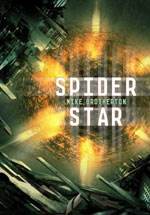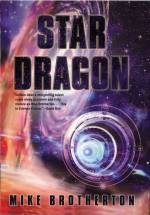Search
Unique Astronomical Environments
August 9th, 2008
One of the things I like doing as a writer is inventing something new in science fiction. It’s been said that there are no new stories to be told, and while that’s true at some level, every story is unique and there’s always the opportunity to bring something new to the table. I read sf in part to get exposed to new ideas. I like the new. I crave the new.
Here’s a list of places that stories can be told, starting from the mundane (literally) to the far out, and some examples.
Earth. Where most stories ever written take place. For example, Earth by David Brin.
Space/Orbit. Lots of cool stories that take place in orbit or deep space. Most of 2001, for instance. You need to worry about gravity (or lack thereof), radiation, air, energy needs, heating and cooling both depending on the circumstances, and more. There are some good reference books like The Space Environment by Harry Stine.
The Moon. Growing Up Weightless by John M. Ford is one of my favorites, even though the title implies a misunderstanding of lunar surface gravity (about 1/6 that of Earth).
Mars. There have been many stories set on Mars. Kim Stanley Robinson’s Red Mars is one of the more recent and very technically accurate examples.
Jupiter. We’re talking about life in the clouds here. There is an atmospheric level with Earth-like temperatures and liquid/water with clouds. For a science treatment, see Carl Sagan’s article. For fiction, see A Meeting with Medusa by Arthur C. Clarke.
Io. This inner moon of Jupiter is a cool place experiencing major tidal stresses and volcanoes. The movie Outland was set here. Unfortunately, the hard radiation field is lethal.
Europa. Second moon of Jupiter, it probably has a liquid ocean under its ice and geothermal vents for energy. Strong possibility of life (at least compared to some places).
Venus. Like Jupiter, there is a cloud level where the temperatures are not outrageous. Floating cities could be built. Larry Niven wrote “Becalmed in Hell” set in the clouds of Venus.
Comets/Asteroids. They’re not just for smacking into the Earth! They can provide some resources and protection that spaceships can’t.
The Sun. Okay, the surface gravity is ridiculous (over 20 gees), but you can coast by in orbit if you can stand the heat. Sundiver by David Brin is one interesting story.
Exoplanets. OK, all kinds of possibilities. Big planets, small planets, high gravity, low gravity. Fast spinning, slow spinning. Ringed. The sky is the limit. Things need not be quite Earth-like. Hal Clement’s Mission of Gravity provides an example of a high-gravity, fast spinning planet. Tatooine with its two suns, shows an example of a planet in a binary star system.
Rogue Planet. Planets get torn from their parent stars sometimes in star clusters. Probably frozen worlds hurtling through empty space, but possibilities there. Space 1999 is not the best guide.
Alien Suns. The sun for your extrasolar planet need not be like the sun. More massive more luminous stars are somewhat unlikely if you want time to evolve local life, but cooler, lower mass K and M stars are possibilities. There are consequences for what the stars look like from the surface here. Fredrick Pohl’s Jem is an example of a story set around a very cool, red star.
Star Clusters. Issac Asimov’s story “Nightfall” is a classic. What effects do multiple stars in the sky have on a culture?
Neutron Stars. Cool objects either to be around, if the radiation/tidal forces don’t kill you. Larry Niven’s “Neutron Star” and Robert Forward’s Dragon’s Egg are classic stories.
Black Holes. A number of stories about falling into, or being near, black holes. Tidal forces (for stellar mass black holes) can kill you. Then there’s time dilation, gravitational redshift, frame dragging, and more odd effects.
Galactic Center. A supermassive black hole several million times the mass of the sun, massive stars and supernovas…not hospitable, but cool. Gregory Benford had a Galactic Center series.
Nebulae. They look cool in pictures, but probably less cool in person, so to speak. Dangerous radiation, supernovas, and more. See Jeffrey Carver’s Sunborn.
Accretion Disks. See Mike Brotherton’s Star Dragon.
Dark Matter Planet. See Mike Brotherton’s Spider Star.
Big Dumb Objects (AKA BDOs). I’m talking things like Larry Niven’s Ringworld, Halo, Dyson Spheres, Robert Reed’s Marrow, Spider Star, etc.
A bit rushed given Worldcon going on here. Made my dark matter panel with seconds to spare. It went well (I’m up on the topic right now). My autographing went well and I signed about a dozen books/cards. The dealer’s room sold out of Spider Star, and I really should have brought books with me from Laramie. Sigh.
You can follow any responses to this entry through the RSS 2.0 feed. You can leave a response, or trackback from your own site.

